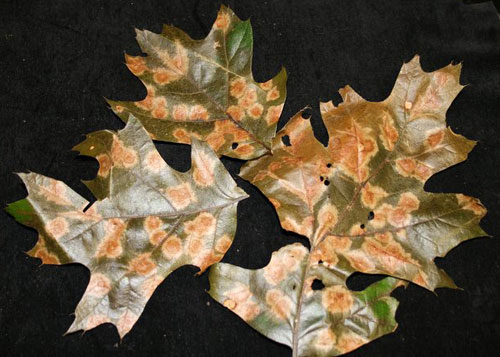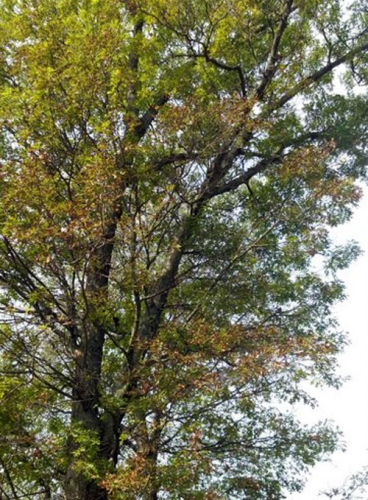Tubakia leaf spot appearing on oak trees
Leaf spots developing on oak may be Tubakia, a fungal pathogen.
MSU Diagnostic Services recently received an oak sample with Tubakia leaf spot. Tubakia is a fungal pathogen that can cause leaf spotting on a range of trees and shrubs; oaks are most often affected. All oaks can be affected, but red oaks are reported to be particularly susceptible.
Tubakia leaf spot symptoms typically don’t develop until mid- to late summer. Note that this is in contrast to oak anthracnose, which begins causing leaf blight in late spring. Tubakia symptoms become more noticeable as the season progresses. The recently submitted foliage had large, circular, nickel-sized necrotic spots (Photo 1).

Photo 1. Tubakia leaf spot on foliage shows large, circular, nickel-sized
necrotic spots.
Trees with heavily affected foliage have an alarming brown appearance and may defoliate prematurely (Photo 2). These alarming symptoms can be mistaken for oak wilt, a far more serious disease, by the untrained tree enthusiast.

Photo 2. Brown appearance on tree caused from
tubakia leaf spot on foliage.
Tubakia leaf spot causes aesthetic damage to affected trees, but will not cause tree death. For this reason, fungicide applications are generally not recommended for landscape trees.



 Print
Print Email
Email




